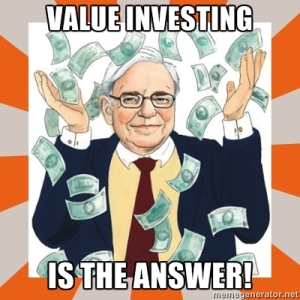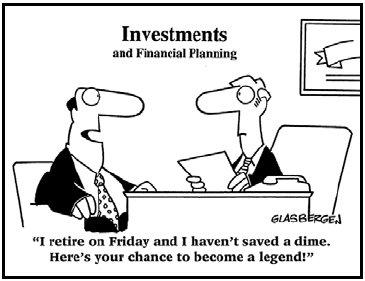For all the investors you must have heard about Benjamin Graham, Warren Buffett, Seth Klarman, Walter Schloss, Christopher H. Browne, Irving Kahn. Ah! Do they sound familiar? Yes they are the famous value investors. Off course with Benjamin Graham being the “Father of value investing”. Let me show you ‘How To Hire Value Stocks For Your Portfolio’.

What is value investing?
Value investing is a strategy of selecting stock whose price has been deflated or is underpriced as compared to its intrinsic price. The underlying belief of value investors is that the market’s reaction towards good news or a bad news overweighs the company’s long term fundamentals. Hence it creates a disparity between a company’s intrinsic value and the actual stock price which at that moment is driven by the market sentiments. Value investors try to explore and grab such opportunity to make money. Remember that there is no specific intrinsic value of a stock. It is an ambiguous term. So if various analysts are given the same number s and information, they may come out with different value for the particular company.
Consider an example where you would like to buy a jacket that is priced at $25. Now you look for opportunities to buy it. There is a pre sale just before winter where you could get it for $20 but again you have another sale after the winters (known as clearance sale) where you could get the same jacket at $17. Now apply the same to stock and that is what the value investor are looking for.
Margin of Safety rule
The value stock has a current price which is less than its intrinsic value. The difference between the two prices is the margin of safety. Consider you make a chair that could easily hold a person with a mass of 90Kg. However the actual mass that the chair could withstand would be higher than 90kg. Let us suppose it can hold 120 kg worth mass. The difference 30kg is the margin of safety.
Now we would apply the same rule to a stock say XYZ. XYZ is currently priced at $15 and its intrinsic value is $25. Now since the intrinsic value is a very vague term even if the stocks actual intrinsic value is $23, a value investor would still be able to make profit when the price of stock rises to its actual intrinsic value. This was possible since the stock price had a good margin of safety. Therefore value investors are in constant search of value stocks which is are offered at high discount.
“Value Investors buys business and not stocks” “Buy value and not junk”
For a value investor buying a stock is buying an ownership of the company, so a value investor would only profit if the company makes profit. They are not concerned about the external factors affecting the company’s stock price such as daily price fluctuation or volatility. Value investors invest in quality companies, they don’t trade. What concerns them is the worth of the underlying assets and the fundamental strength of the company. It is important to remember that a drop in price below the intrinsic price does not necessarily make the stock is undervalued. It just means that the stock price has come down due to market reaction to a fundamental problem or any other news affecting the market sentiments. So until the company has good fundamental, the stock isn’t worth buying.
“Value investors Contradict Efficient Market Hypothesis and High Beta Theory”
According to EMH all the news and company fundamental are reflected in the stock price, however the value investors contradict this fact since they are looking for inefficiency in the market to enter to take new positions. Again they don’t believe in the perception that picking up a high beta stock would result in a risky investment. If a value investor believe that the fundamental of a company is strong and even a drop in price of a stock XYZ from $25 to $20 to $15 would be seen as a buying opportunity while few others would feel the stock to be a risky investment.

Quick Strategies to Hire Value stocks
The strategy depends more or less on your investment style, risk appetite, investment objective etc. Few of them are listed here. Do make your own strategy and simulate it. This strategy should be looked once you are sure and familiar with the company’s business and fundamental. An industry insight would add fuel to your rocket strategy.
- Value stock can be located in any industry. Keep a check at the industry trend. Remember “Trend is your best friend”
- Lookout for company which hits new lows. Check for its fundamental and find out stocks which are available at discount to its 52 week high.
- Share price should be less than < 2/3 X Intrinsic worth
- Companies with low P/E ratio (usually lowest of 10% of all listed securities)
- Debt/Equity Ratio < 1
- Stock Price should less than or equal to tangible book value
- Current assets = 2* Current Liabilities
- Earning should have a CAGR of at least 8% per annum.
- Dividend yield greater than 2/3 rd of the long term bond yield
Example of a a step by step strategy
STEP 1
Filter out companies with sales greater than at least INR 250Cr ($1.6 Million). Business with sales less than this may not have the stability t and access to finance for a profitable investment. They might be riskier.
Step 2
Out of those filtered out companies look for business with a debt to equity ratio less than 30%. However the debt to equity ratio varies between different industries; hence always have an orange to orange or an apple to apple comparison.
Step 3
Now Out of those filtered out companies select companies with an interest coverage ratio of greater than 4. Companies with a higher ratio are good.
Step 4
Select companies with Return on Equity (ROE) greater than 15%, since their earning are more than their cost of capital
Step 5
Finally check for PE ratio. Selected company should have PE ration less than 25 or at least a lot lesser than the industry PE ratio. Further know your industry and check which ratio would be more suitable for that specific industry.












